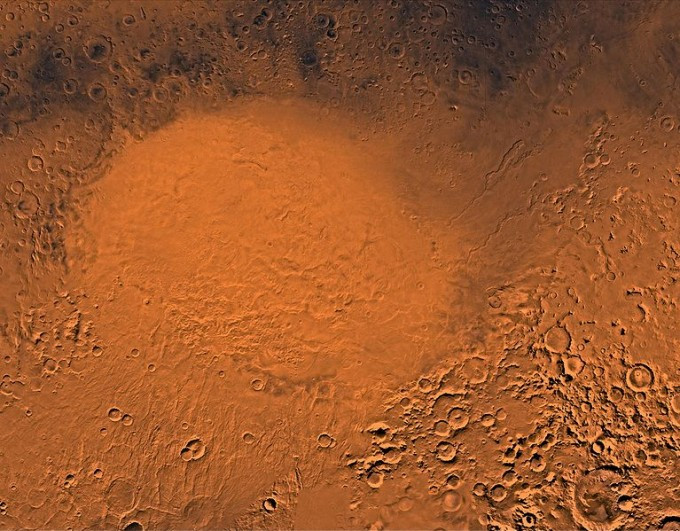Discovered two locations with potential to nurture life on Mars
Scientists have done an analysis of a strange place on the surface of Mars and more interestingly, they say that this is the perfect place to search for life outside of Earth. It is perfectly possible to have all three elements that make up life, including water, heat and nutrition.
This funnel-shaped structure on Mars is similar to the ancient ice panes we have on Earth, the basins created when volcanoes erupt under thick ice in Iceland and Greenland. If the eruption had taken place similarly on Mars, it could leave a warm and nutritious environment.
"We focus our attention and focus on this area because it can contain the key elements of life, water, warmth and nutrition," said the research leader from the University. Texas, Joseph Levy said.

Hellas Plain area on Red Planet.
This funnel-shaped terrain lies at a volcanic crater on the outskirts of the Plains Hellas, the southern hemisphere of Mars.
The Hellas basin itself is already a giant impact hole, in fact it is the largest impact crater visible in the Solar System. Located inside this hole are many smaller pits, which makes scientists predict that this place is an extremely ancient terrain structure of the Red Planet.
For the first time, researcher Levy discovered that this funnel-shaped structure was in 2009, when he studied a strange crack in a photograph sent from NASA's Mars Reconnaissance Satellite.
He then found a similar structure at the Hole of Galaxias, near a large basin called the Utopia Plain.
"I pay attention to these terrain because they are very strange shapes , " Levy said. "This is a geological structure very similar to many places on Earth."
Until last year, Mr. Levy had enough data to specifically analyze these funnel-shaped structures and, thanks to 3D modeling technology from 2D images, he and his colleagues were able to accurately draw the shape of the funnel. how is this.

They discovered two such potential locations.
"These images surprised us very much, I was thinking a lot about the possibility of ice melting in the deepest part of this area, making the outside matter possible to infiltrate." Mr. Levy said.
The next step, the researchers will reconstruct some of the possible past structures of this funnel-shaped area, finding the most feasible terrain to create it today.
Unlike other collisions, this area shows that it once had volcanic activity. High temperatures will melt the ice on the surface, pushing them to the sides to create such funnel-shaped terrain. That is what happens much on our Land.

Huge ice pan in Iceland.
Scientists estimate that the amount of magmatic must be very large in order to melt the ice and create such a large hole, an estimated number of 100,000 cubic meters of magma.
The ice melts to create water, magma leaving warmth and nutrition; that's enough of the three elements for life to grow. That is why they are so interested in this area.
NASA's plan to send more Mars surface exploration ships by 2020 will have an additional feasibility study area."It is very similar to the giant ice panes on Earth, so it will be a potential research target , " said volcanic expert Gro Pedersen, who is not part of the research group. Press conference to announce research results.
In the next few years, four years from NASA's next mission to explore the surface of Mars, it is likely that we will know that humans are not the only living entity in this universe.
- Aliens may have been on Mars 3.8 billion years ago
- Evidence of Mars contains enough oxygen to support life
- Discover potential sources of life for Martian microorganisms
- Discover the best location to search for life on Mars
- Locate the answer for Europe's Mars mission
- Life may have existed 700 million years on Mars
- Go to Mars, where is the spy ship landing?
- The 7 biggest mysteries about Mars have not been discovered
- Mars can nourish life
- Discover more evidence of life on Mars
- NASA suddenly announced shock about life on Mars
- NASA discovered methane gas, a sign of life on Mars
 Van Allen's belt and evidence that the Apollo 11 mission to the Moon was myth
Van Allen's belt and evidence that the Apollo 11 mission to the Moon was myth The levels of civilization in the universe (Kardashev scale)
The levels of civilization in the universe (Kardashev scale) Today Mars, the sun and the Earth are aligned
Today Mars, the sun and the Earth are aligned The Amazon owner announced a secret plan to build a space base for thousands of people
The Amazon owner announced a secret plan to build a space base for thousands of people